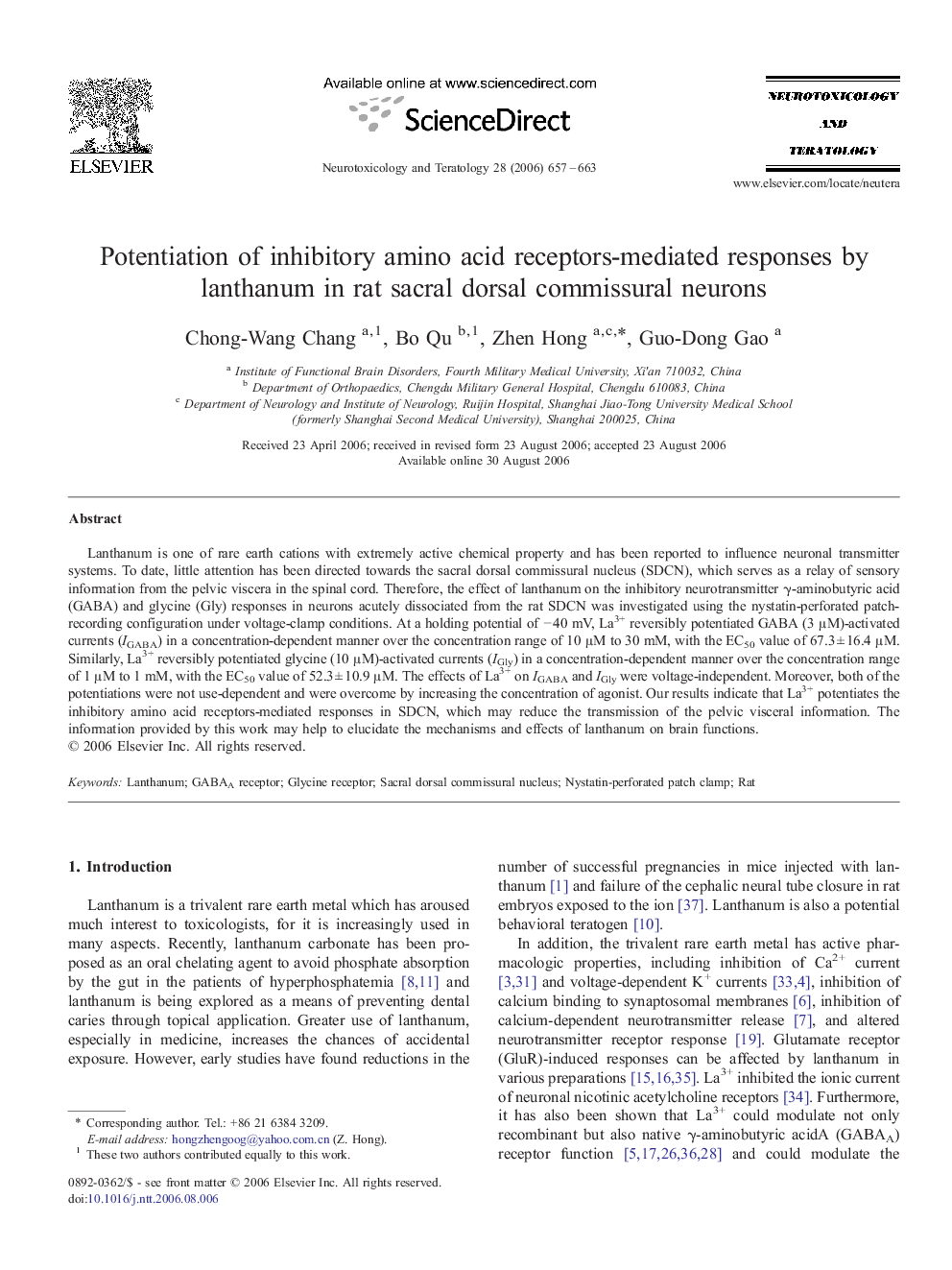| Article ID | Journal | Published Year | Pages | File Type |
|---|---|---|---|---|
| 2591923 | Neurotoxicology and Teratology | 2006 | 7 Pages |
Lanthanum is one of rare earth cations with extremely active chemical property and has been reported to influence neuronal transmitter systems. To date, little attention has been directed towards the sacral dorsal commissural nucleus (SDCN), which serves as a relay of sensory information from the pelvic viscera in the spinal cord. Therefore, the effect of lanthanum on the inhibitory neurotransmitter γ-aminobutyric acid (GABA) and glycine (Gly) responses in neurons acutely dissociated from the rat SDCN was investigated using the nystatin-perforated patch-recording configuration under voltage-clamp conditions. At a holding potential of − 40 mV, La3+ reversibly potentiated GABA (3 μM)-activated currents (IGABA) in a concentration-dependent manner over the concentration range of 10 μM to 30 mM, with the EC50 value of 67.3 ± 16.4 μM. Similarly, La3+ reversibly potentiated glycine (10 μM)-activated currents (IGly) in a concentration-dependent manner over the concentration range of 1 μM to 1 mM, with the EC50 value of 52.3 ± 10.9 μM. The effects of La3+ on IGABA and IGly were voltage-independent. Moreover, both of the potentiations were not use-dependent and were overcome by increasing the concentration of agonist. Our results indicate that La3+ potentiates the inhibitory amino acid receptors-mediated responses in SDCN, which may reduce the transmission of the pelvic visceral information. The information provided by this work may help to elucidate the mechanisms and effects of lanthanum on brain functions.
